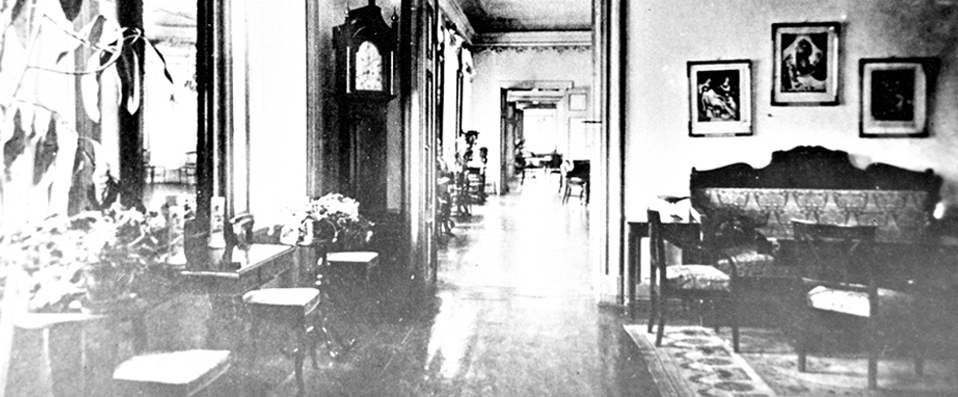History
The first written record of the Sagadi manorial estate dates back to 1469. In 1687 the estate passed to Gideon von Fock, a Swedish Adjutant General. During that time, the manor house was a log structure with a board roof. Johann Ernst von Fock, the grandson of Gideon von Fock, commenced the construction work on the new stone manor house in 1749. The manor house was built with baroque elegance and is one of the few mansions with rococo décor of that era in Estonia. The building was completed in 1753. It was a one-storey structure with a gable hip roof and a high triangular gable in the middle. A high parade staircase emphasised the grandeur of the building.
After the death of Johann Ernst von Fock, the estate passed to Gideon Ernst von Fock. As the manor house had become too small for the large family and the increased number of servants, Gideon Ernst von Fock began a large-scale reconstruction of the estate buildings in 1793. By 1794, the early neo-classical style gatehouse with its baroque style roof, erected in memory of ancestors, was completed.
With the construction of the gatehouse, the front of the manor house formed a closed courtyard. The house itself was extended by about 10 meters and the roof edges were enhanced by decorative vases. Simultaneously, the old baroque estate gardens were extended by the addition of an English style park.
After his father’s death, the next owner of the estate, Paul Alexander von Fock, the most remarkable of all the manorial lords of the Sagadi estate, continued the construction work on the estate. In 1894, a pillared balcony with a fountain was attached to the façade, facing the estate gardens. All the later reconstruction and renovation work performed at Sagadi has not significantly altered the architecture of the manor. The last aristocratic owner of the Sagadi manorial estate was Ernst von Fock.
In 1919, the Sagadi manorial estate was nationalised. The subsequent land reform left the former owner with only the heart of the estate. Ernst von Fock remained a tenant of the Sagadi estate until 1939, when he and his family moved to Germany.
From 1929 to 1971 a primary school was in the mansion. The outbuildings were used by a local collective farm. In 1977 all the buildings, the park, the orchard, some forest and fields were handed over to Rakvere Forest District. Then the renovation work on the manor house began and lasted until 1987.
At present, the manor house is open to visitors as part of RMK Sagadi Forest Centre museum, displaying manorial architecture and interiors with furniture from the corresponding eras. The former estate kitchen is now a hunting hall with hunting trophies as well as a unique Sven Lord weaponry collection reflecting the development of the hunting arms over the past 250 years.














